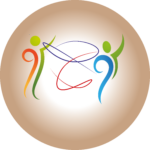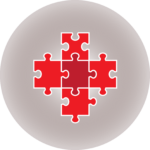PATTERNS AND A PATTERN LANGUAGE
You can read more about patterns and how they are constructed. You will also find information about the different levels we refer to in each of the patterns
Patterns
We use the word patterns to describe some of the ingredients that have proven to be helpful to those wishing to use dialogue as a way of enabling transformation. The smaller parts are combined in order to deal with a variety of situations in the same way that words are combined to make sentences that form a language.
This language of patterns gives a common terminology for discussing the situations dialogue practitioners and facilitators are faced with.
The elements of this language are entities called patterns. Each pattern describes a problem that occurs over and over again in our environment, and then describes the core of the solution to that problem, in such a way that you can use this solution a million times over, without ever doing it the same way twice.
— Christopher Alexander, A Pattern Language
THE STRUCTURE OF A PATTERN
Each pattern has the same structure and consists of seven parts. Most patterns can be used on different levels of scale – intrapersonal, interpersonal, group and societal levels.
Mini patterns: There are also patterns that are more compact and do not contain the levels of scale or that only apply to a single scale level.
A SUMMARY

A short description of the pattern and its main principle
THE PROBLEM

A pattern is a way in which a problem can be resolved
THE PATTERN

A description of a possible way of dealing with the problem
CONTEXT
Where this pattern can be used.
MORE
If you want to know more about the theory or read about the pattern in greater detail, there will usually be more to read
LINKS
Each pattern is linked to other patterns. You can explore the related patterns by clicking on the links.
LEVELS AND FOCUS
We distinguish four different levels of scale. You will find all these levels in most of the patterns. It is our intention to show that the skills and meta-skills are applicable on all levels of scale.
INNER LEVEL
Many patterns have an inner dimension even if they apply on the systems level. Our thinking patterns and our feelings determine how we act and the results we attain. Patterns on this level are personal. As with other patterns, they are honed by practice.
INTERPERSONAL LEVEL

Patterns on this level concern conversations between individuals – when we speak to one another in pairs or small groups. This may occur as we walk together, work together or live together. There is a dynamic in such conversations between individuals that are either energising or energy-sapping. They give rise to change or maintain stagnation.
GROUP LEVEL

Patterns on this third level concern groups of people acting in common. The groups can be more or less formal. Organisations, networks, societies, teams, and families are such groups. They characteristically have dynamics that are different from those found on other levels.
SYSTEMS LEVEL

On the systems level, we find patterns relating to society as a whole. Systems change has a structural dimension and a deeper logic that is often determined by power. Typically this level concerns society and those structures societies create to govern or lead them.





